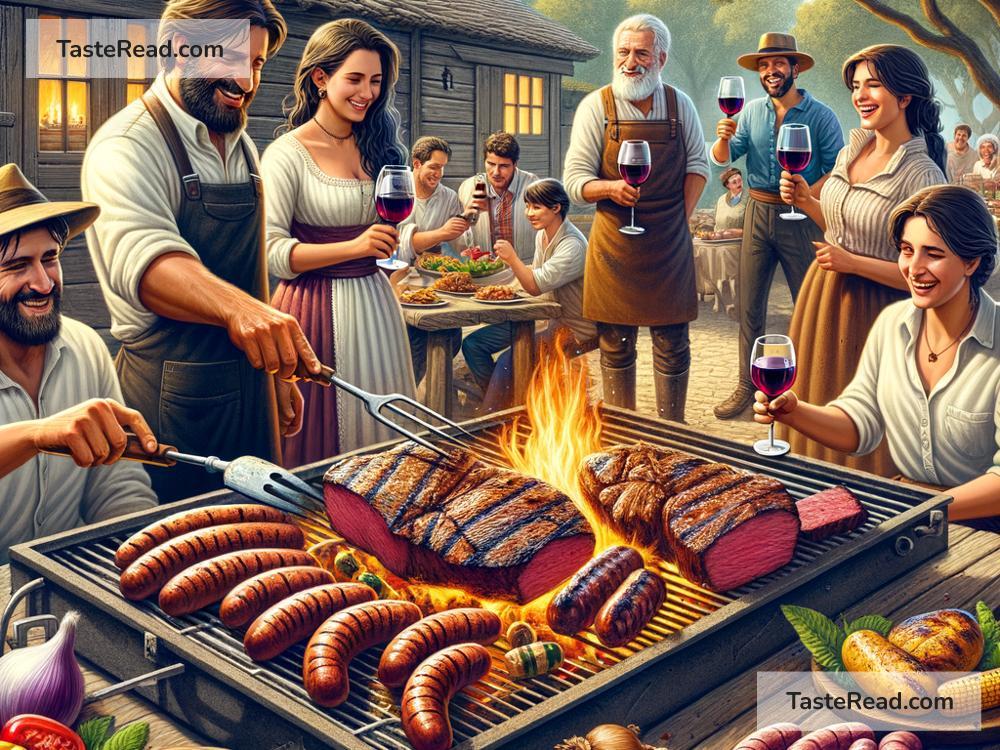The Story of Argentinian Asado: A Taste of Tradition
If there’s one thing Argentina is famous for, aside from its love for tango and soccer, it is its mouthwatering asado—a barbeque style that’s more than just food; it’s a way of life. For Argentinians, asado is not just about grilling meat but about family, friendship, and tradition. Let’s dive into the story of Argentinian asado, its origins, and why it means so much to Argentinians.
What is Asado?
At its core, asado is the act of cooking meat over an open flame or hot coals, usually on a grill called a parrilla or directly on the ground with a fire pit. But in Argentina, it goes far beyond just cooking. It is an event, a social gathering, and a cherished tradition where food becomes the centerpiece for connecting with loved ones.
The word “asado” refers not only to the cooking technique but also to the event itself. When someone says, “Let’s have an asado,” it means inviting people over, firing up the grill, and spending hours eating, laughing, and sharing stories. It’s not rushed or hurried—it’s a celebration of life.
A History Rooted in Gauchos and Cattle
The roots of asado stretch back to Argentina’s 16th and 17th centuries, during the days of the gauchos—Argentina’s cowboy-like herders. The gauchos roamed the vast pampas (grasslands) of Argentina, raising cattle and living off the land. Beef quickly became central to their diet as they had easy access to large herds of cattle. The gauchos were known to cook their meat in the simplest way: spitted over an open flame.
This method of grilling meat, called asado criollo, became part of Argentina’s identity. It was practical, flavorful, and brought people together—whether it was gauchos cooking for their fellow herders or families gathering on farms. Over time, asado became deeply associated with Argentina’s culture, blending the country’s agricultural heritage with its social traditions.
The Heart of Asado: The Parrilla
Every asado begins with the parrilla, the grill that is the centerpiece of the cooking process. A parrilla is typically a metal grill, often built into outdoor spaces or backyards. Some grills even have adjustable heights, allowing the asador (the person who cooks the asado) to control the heat and ensure the meat cooks evenly.
Argentine grilling is all about using charcoal (carbón) or wood (leña) to create slow-burning heat. Unlike fast grilling methods you might see at a typical BBQ, Argentinian asado focuses on low and slow cooking. The meat is cooked gradually, absorbing the smoky flavors from the wood or charcoal and producing tender, juicy results.
The Cuts of Meat
Argentinians take pride in their meat, and rightfully so. The country is one of the world’s leading producers of beef, known for its high quality. Common cuts of meat used in an asado include:
- Tira de asado: Short ribs, a favorite choice for grilling.
- Vacío: Flank steak, known for its rich, flavorful texture.
- Costillas: Full beef ribs.
- Chorizo: Sausages that are either sweet or spicy, a must for every asado.
- Morcilla: Blood sausage, bold in flavor and a unique treat for adventurous eaters.
- Matambre: A thin cut that’s often stuffed and rolled, making it a feast within itself.
Beyond beef, Argentinians also grill chicken, pork, and even lamb, although beef remains king.
Simplicity is Key
One of the defining features of Argentinian asado is its simplicity. The meat is usually seasoned with just salt, letting the natural flavors shine. There are no heavy marinades or sauces. Instead, Argentinians believe that the quality of their meat speaks for itself.
However, there’s one sauce that accompanies nearly every asado: chimichurri. This green sauce is made from parsley, garlic, olive oil, vinegar, and spices. Chimichurri adds a fresh, tangy kick that perfectly complements the rich flavors of the grilled meat.
The Social Aspect of Asado
What truly sets asado apart is its role as a social event. An asado is not something you do quickly; it’s something that takes time, care, and preparation. The asador is often seen as the star of the gathering, carefully tending to the grill while friends and family share drinks, conversations, and laughter.
Tradition dictates that the meat is served in stages. People start with less fatty cuts like sausages and ribs, and later move on to larger or richer pieces of beef. Side dishes like salads, grilled vegetables, and bread are always present, but the focus remains on the meat.
Sharing an asado is about slowing down and enjoying life in good company. It’s not only about eating delicious food but also about building relationships and creating memories.
A National Symbol
It’s no surprise that asado is considered a national symbol in Argentina. Whether it’s a small family gathering or a large festive occasion, the asado embodies the values of togetherness, hospitality, and appreciation for Argentina’s rich agricultural heritage.
To outsiders, an asado might look like just another barbeque, but for Argentinians, it reflects their soul. It’s a tradition passed down from the gauchos to modern-day families, uniting people over the simple yet profound act of grilling meat and sharing stories.
Conclusion
Argentinian asado is more than a meal; it’s a heartfelt ritual that celebrates Argentina’s love for great food and strong connections. Whether you’re enjoying sizzling beef ribs straight off the grill, dipping bread into fresh chimichurri, or simply spending time with loved ones, asado offers a magical experience.
So, the next time you think about grilling, remember the story of Argentinian asado—a tradition that turns food into a celebration of life, loved ones, and the things that truly matter. Wouldn’t it be wonderful to fire up the parrilla and try it yourself?


